Interview of Dr. Lucica Ditiu, Executive Director of the Stop TB Partnership is a Romanian physician, accomplished professional and leader in the global fight against tuberculosis (TB) and other communicable diseases. Dr. Ditiu is driven by the firm belief that we should “leave no one behind” and is one of the strongest advocates within the international community in the fight against tuberculosis. A firm believer in innovation, flexibility, change, breaking the rules and thinking out of the box, Dr. Ditiu is dedicated to driving political commitment and engagement to accelerate the efforts to end TB.
1. Presently, what would you consider to be the main gaps, needs and issues regarding the fight against TB worldwide? According to you, what needs changing to ensure that we end TB by 2030?
Two main ingredients are needed: (i) political leadership, and financing. Political leaders and key stakeholders need to better understand the TB situation as well as the opportunities we have right now in terms of ending it. So, it’s about the visibility of the issue and maintaining TB on the global, regional, and national map of priorities. For its part, the financing of TB is dramatically low, leaving huge gaps at implementation level as well as at research and development level. I will maybe add a third one, which is having TB survivors, civil society and communities seriously and appropriately engaged in TB response. We are doing much better presently, but more needs to be done so they are properly involved in raising awareness, developing programmes, implementing activities as well as monitoring what is happening.
2. To what extent is strengthening international support toward TB R&D important to advance the fight against TB?
It’s a crucial moment for us in TB: we are at an inflexion point. We have so many opportunities in terms of R&D that shouldn’t be wasted. These are linked to the fact that we have a lot of energy in the diagnostic space with a pretty robust pipeline of amazing diagnosis tools. Some of them are in the initial phase of research, and others are more advanced with the purpose of having self-test point of care that can actually be done and self-administered by everyone. I think our dream is to have a “no laboratory diagnosis” in which people can ideally get a diagnosis for TB disease as well as infection. We are also in a very good place with a lot of research happening on treatment regimens for prevention as well as for actual treatment of the disease, with the dream of having a one-month regimen that can fit every form of TB. Even on the vaccine side, we have at least 4 candidates in phase 3 or entering the last trials. So, there is a lot of energy combined with the fact that there is a lot of digital technology and artificial intelligence that is being used already in the TB space.
What we miss most though, and there were several meetings during the 2023 World Health Assembly that mentioned it, is a predictable and robust pipeline of resources. Every year, our colleagues from TAG, with our support, are producing a report on R&D financing. The financing for TB research is coming from a few big donors on which we can count, that is to say the US, with the different channels that they have, the Bill and Melinda Gates Foundation and then the EU, as well as some of the governments of different countries. It’s completely insufficient. We had a heated discussion during a WHO roundtable at the WHA during which, DG Tedros basically said that with a fraction of the money from COVID, with the crumbles from COVID to be precise, we could have a TB vaccine. And he’s right. So, external funding is crucial. And I would like to say that France, as you know, was at the forefront on R&D for TB, with the BCG discovery as well as the network of Institut Pasteur and its huge R&D capacities. It is important we have increased funding, and funding that is also predictable and helping with the last mile of clinical trials. Some people call it the “Death Valley of Phase 3” as they are usually very expensive though extremely important.
3. Can you tell us a bit more about your organisation’s work on TB R&D and how you are working together with partners to advance research for new TB tools?
At Stop TB, we do several things for R&D. One is our own advocacy work around TB R&D for increased funding and for new tools. It is done at the secretariat level, by supporting partners, and with our networks of civil society actors and communities (at country level). We also have a “New tools” working group, which includes new diagnostics, new vaccines and new treatments, that is working to ensure a full coordination and alignment on this important topic. In addition to this, we have discussions with Ministers of Health about R&D needs, most recently in May with the ones from India, South Africa, and Brazil. It is conducted not only with the purpose of them being made more aware of the issue, but also with the purpose of allowing them to enter this space much more strategically and better coordinated. They all are very keen to do so, but I think there is a long way to go before the rubber hits the road. We also have a team called TB Reach which funds new tools, new initiatives and innovations and then gathers evidence for WHO to consider it for its recommendations and guidelines, or to understand how they can be implemented in gathering intelligence from the country level partners on what works and what doesn’t. TB Reach is giving every year around $15 million in grants for new initiatives, new tools, and innovations.
4. Since you’ve started working and advocating in the fight against TB, what had been the game changing tools and what are your biggest expectations in the short future for new tools that could help us get back on track and finally eradicate TB?
In terms of tool granted by R&D, I think of 3 game changers: (i) The rapid molecular diagnosis is the first one, especially now there are several manufacturers producing it. (ii) The second one is the fact that we now have a shorter treatment regimen for drug sensitive and drug resistant TB. I think it also opened the gate for people to hope that we shorten it further. (iii) The third game changer for me is the mobile X-ray equipped with artificial intelligence. The fact that you can go in a community with a backpack and there is no need for a laboratory or doctor is truly game-changing. You can take it with you and have someone else with a GeneXpert and you can actually do door to door surveillance and screening. With the hope that all this digital technology will go further, it’s probably a very important step.
Now, where should we go? What would be ideal for TB? One is a self-test, either with a breast tube (as colleagues from Toulouse are working on), or the urine test or the cough app. The second is a one-month treatment for TB that is the same for drug sensitive and drug resistant TB, and that can be done with a patch or with a spray. The third is obviously the vaccine, and a one that effectively works. Ideally, we need a vaccine that can block the evolution from infection to disease, but one that people can take to be protected from getting infected would be a first step.
5. How can the efforts to sustainably build regional manufacturing capacity for medical countermeasures ensure an equitable and affordable access to innovative tools to those most in need?
The desire is there. If you listen to them speaking, especially big countries such as India, Indonesia, Brazil, or South Africa, the desire is there to enter this space, to do more and to have manufacturing capacity. I think what’s needed is ensuring that they sit at the table and discuss the issue in concrete terms. It is important they reach the point where the practical questions are addressed: Can we do it? Can we see what is it about? What can we do together? What can we transfer? Can we organize the clinical trials of each other? Can we support enrolment of patients?
Many different things are happening in parallel in different countries, with different trials. The coordination is one thing we discussed a lot in the secretariat here in trying to see how things can be done quicker and better. One thing that we learned with COVID is that, in research, things don’t need to be done in sequence, meaning: clinical research, then initial bench work, then phase 1, then phase 2, and then phase 3. COVID showed that it’s possible to do these things in parallel. I believe countries could discuss and collaborate and have things run in parallel, so we move forward more quickly.



